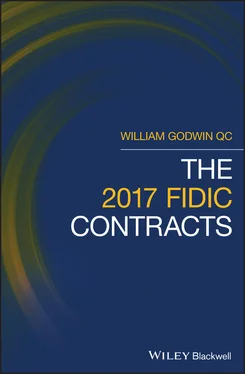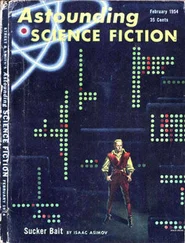1 ...7 8 9 11 12 13 ...18 Clause 1.4 in the 2017 editions deals with the governing law of the Contract as well as the language of the Contract/communications. These are both important matters that should be stated in the Contract Data.
The governing law of a contract is the system of law according to which the rights, obligations and liabilities of the parties to the contract are to be determined. A system of law should be agreed which is reliable and sufficiently sophisticated to allow for the complexities of the contract and the project to which it relates. As noted in Section 1.2above, the FIDIC forms have UK origins and important features of the forms reflect English or common law concepts. FIDIC contracts have, however, been used successfully whatever the governing law and a feature of the contracts historically, as well as the 2017 editions, has been to ensure as far as possible that the general conditions are neutral with respect to the particular governing law chosen by the parties.
The governing law is to be distinguished from the law relating to the procedure for deciding a dispute which might arise under or in connection with the contract. A dispute arising under a contract governed by, for example, New York law may be resolved by arbitration in Paris or London or Singapore. If the arbitration has its seat in London then any procedural matters relating to the arbitration, such as a serious irregularity in the process, will be dealt with by applying English procedural law, contained mainly in the Arbitration Act 1996; that Act will also determine the extent to which a party might be able to set aside an arbitral award on the basis that the tribunal lacked jurisdiction, for example, or the extent of a party's right to appeal an award on a point of law.
2.3.2 Language of the Contract/Communications
This is an important matter because cross‐border contracts will often involve parties who speak different languages and may well be operating with versions of the contract in their own language. It is important to identify the ‘ruling’ language so that any conflicts between such different versions may be definitively resolved. Thus in the 2017 editions, as with the 1999, the parties are to identify in the Contract Data (2017) or Appendix to Tender/Particular Conditions (1999) the ruling language. It is also important to identify the language for communications, and again this should be stated in the Contract Data (or 1999 equivalent).
2.4 Priority of Documents
In both editions of all three forms clause 1.5 deals with the priority of documents. A FIDIC contract will consist of a whole range of documents and so there is a risk of conflicts, ambiguities or discrepancies between them. Clause 1.5 begins by stating the general principle that the documents forming the Contract are to be taken as mutually explanatory of one another. Categories of document are then set out and given a priority, so that any conflict, ambiguity or discrepancy between them can be resolved by assigning the relevant document the appropriate place in the hierarchy. In the Yellow Book in both editions, for example, the Contract Agreement has first place in the hierarchy, followed by the Letter of Acceptance and the Letter of Tender. 2 In the 2017 editions a party detecting an ambiguity or discrepancy must give notice to the Engineer (or in the Silver Book, the other party) and appropriate clarifications or instructions are to be given.
An important practical point about clause 1.5 is that, at the lowest end of the hierarchy, there is a space for ‘any other documents’ forming part of the Contract. This is a potential trap, because there may well be Contract documents which do not fall into any of the categories identified elsewhere in the hierarchy but which have great importance and require a higher position than perhaps some documents which are listed; there may, for example, be highly important technical requirements contained in Contract documents which ought not to have the lowest priority. Care should be taken, therefore, in ensuring that an appropriate position in the hierarchy is accorded to documents which may not fall into the pre‐existing categories, otherwise by default they will be given the lowest ranking.
It is not unusual in many projects for pre‐contractual documents to be appended to the Contract with a priority clause intended to protect against the risk of inconsistencies with, for example, bespoke amendments to Contract conditions. However, as a recent English High Court decision on a domestic sub‐contract form highlights, careful attention has to be paid to all the technical and commercial documents making up the Contract if unintended consequences are to be avoided. In Clancy Dowcra Ltd v E.ON Energy Solutions Ltd [2018] EWHC 3124 (TCC) it was held that, despite a clause giving priority to amendments placing the risk of ground conditions on the sub‐contractor it was able to rely on exclusions contained in tender documentation appended to the sub‐contract to avoid liability when adverse ground conditions were encountered, since they were taken to have defined the scope of the sub‐contract works. Whatever priority is assigned, therefore, appending documents to the Contract may give rise to unintended consequences if insufficient attention is paid to their effect or scope.
2.5 Errors in the Employer's Requirements/Delayed Drawings and Instructions
As already mentioned in Section 1.3.3 above, in both editions of the Yellow Book the Contractor in certain circumstances may claim an extension of time and/or cost plus profit if there are errors in the Employer's Requirements which an experienced Contractor exercising due care would not have been expected to detect. We examine below the provisions of clause 1.9 in the 2017 Yellow Book setting out this entitlement, and then those of clause 1.9 in the 2017 Red Book dealing with the Contractor's entitlement to more time and money if any necessary drawings or instructions are not issued to the Contractor timeously.
2.5.1 Errors in Employer's Requirements: Yellow Book Clause 1.9
The Contractor is obliged under clause 5.1 to scrutinise the Employer's Requirements after the notice of commencement of the works under clause 8.1 has been issued by the Employer. If the Contractor finds an error, fault or defect in the Employer's Requirements as a result of this scrutiny he must give a notice to the Engineer within whatever period may be stated in the Contract Data (or, if none is stated, 42 days) calculated from the commencement date. If after expiry of this period the Contractor finds an error, fault or defect he must also give a notice to the Engineer describing it.
The Engineer must then proceed under clause 3.7 to agree or determine:
1 (a) whether or not there is a defect in the Employer's Requirements;
2 (b) whether or not (taking into account cost and time) an experienced contractor exercising due care would have discovered it either (i) when examining the site and Employer's Requirements before he submits his tender or (ii) when scrutinising the Employer's Requirements under clause 5.1 (if the defect is notified after expiry of the period referred to in the preceding paragraph calculated from the commencement date); and
3 (c) what measures (if any) the Contractor is required to take to rectify the defect.
If an experienced and careful contractor would not have discovered the defect and suffers delay and/or incurs cost as a result he may claim an extension of time and/or payment of cost plus profit. If the Contractor is required to take any measures as a result of the defect he is entitled to have them treated as having been instructed as variations under clause 13.3.1, and to an appropriate extension of time and/or payment accordingly, without having to claim.
Читать дальше












